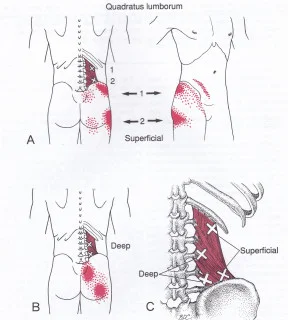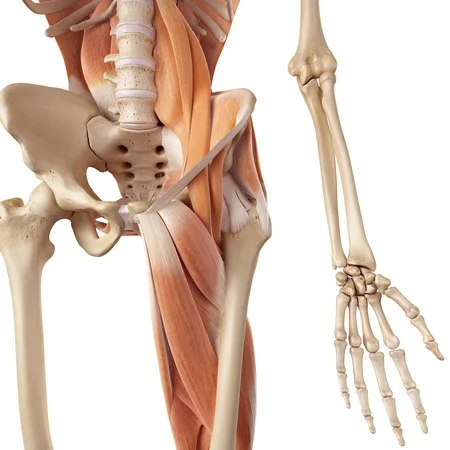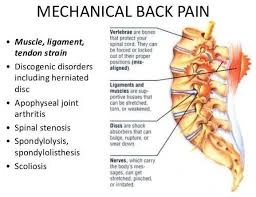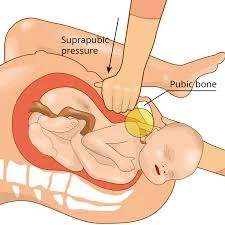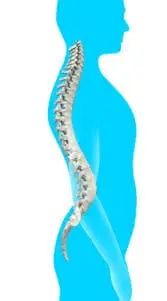Trigger Points in Lower Back
Trigger points in the lower back are tight, sensitive areas within muscle fibers that can lead to pain, stiffness, and restricted movement. These points often develop in muscles like the quadratus lumborum, erector spinae, and gluteal muscles due to factors such as poor posture, overuse, or stress.
A trigger point is what?
A trigger point is an extremely irritating tissue lump that is attached to your muscle fibers. It can trigger several symptoms and refer to discomfort in other parts of the body. Pain results from applying pressure to trigger points. The muscle fibers are becoming frozen together on a tiny level.
Actin and myosin, the smallest contracting units of muscle fibers, are two essential parts of sarcomeres. It is necessary to separate these two interlocking mechanisms when they become stuck together.
Additionally, during motions, healthy tissues should be able to move and slide around one another. Their lymph and blood should flow easily. However, these beneficial processes are hindered when a trigger point is present, which results in pain.
Trigger points in the lower back:
Lower back TPs are quite prevalent. However, the amount of stress or ongoing tension that is “held” in the muscles is one of the main causes. For instance, we will automatically stiffen our backs and activate the fight-or-flight response when we are under stress.
This persists and results in persistently tense muscles rather than just disappearing when we leave the situation. Once someone begins probing around, you’ll be shocked to see where you’re harboring muscular tension. The quantity of time spent sitting during the day is another factor contributing to low back TPs. Little pauses during the day are essential!
Why do you develop lower back trigger points?
The necessity to maintain muscular contraction will result in trigger points. A trigger point may develop if you abuse a muscle, have an injury, or keep your tissues closed for extended periods.
These days, overuse is a prevalent issue not just in athletics but also in the office.
Consider any movement that you might do hundreds, thousands, or even dozens of times every day. While driving your automobile, you may move your computer mouse, type on the keyboard, or push the foot petals. Perhaps you play golf or another sport. This is similar to repeatedly slamming the club. On those large drives, you exert all of your energy.
Trigger points are unfortunately caused by injury. Your body will automatically defend the wounded region if you harm yourself. Usually, it does this by limiting mobility.
Initially, shutting down your range of motion and tightening your muscles is a helpful defensive measure. However, this might lead to trigger points and issues if your body is in lockdown mode for an extended period.
Simply by maintaining the muscle fibers tight for an extended period, posture will shorten your muscles and result in trigger points.
When you finish viewing a movie or reviewing a book, do you happen to ever feel stiff? After a few hours of sitting, you discover you need to stretch when you get up. After being inactive for so long, you must release the muscular fibers that have been closed. Let’s combine those three reasons.
Lower back trigger point syndrome:
The most common symptoms of lower back trigger points are aching and dull discomfort. The placement and intensity of the trigger sites might affect the symptoms. We can emphasize the most prevalent symptoms because of the information we’ve learned from practice:
Pain that is dull and painful. A dull, agonizing ache that is either intermittent or chronic might be caused by lower back points. It can be felt deep inside the lower back’s muscles. Certain motions or activities may make this pain worse.
Pain that radiates. Trigger point discomfort can radiate to several body parts, such as:
hips;
buttocks.
This pain may manifest as a more dispersed aching or as a sudden, shooting feeling.
Limited mobility. You may have less range of motion in your lower back due to tight or stiff muscles. This may make it challenging to:
stoop;
twist;
or carry out additional lower back-related exercises.
tightness or stiffness in the muscles. The lower back muscles may become tense or rigid due to trigger points. It makes moving around and carrying out daily tasks challenging. You could:
- feel as though the muscles are tense or under strain;
- or observe that you have a restricted range of motion.
tender nodules or knots. These knots may feel sensitive or uncomfortable to the touch, and they may be palpable or visible.
tingling or numbness. Trigger points can occasionally result in nerve compression. The legs or feet may become tingly or numb as a result.
Muscles in the Lower Back Trigger Points:
Trigger points in the quadratus lumborum (QL), psoas, iliacus, gluteus medius, and piriformis are the five primary muscles that can cause lower back discomfort. All you need to know is what they are, how they cause pain, and how to relieve them. Each of them may refer to discomfort in the lower back by a different method.
The QL Claw is a deep-tissue massage instrument that may be used at home to release all five major muscles. I developed a QL Claw to target all of the muscles and trigger points in the lower back, removing uncertainty and efficiently massaging hard-to-reach areas.
QL, or quadratus lumbroum
The quadratus lumborum (QL), the only muscle in this position that truly resides in the lower back, comes up first. The painful pattern might be caused by trigger points in the QL muscle, which is situated deep in the lower back on both sides of the spine. Your greatest option for relieving tension and discomfort when trigger points are present is to use a deep tissue massage using the QL Claw, which is called after the QL muscle.
Psoas and Iliacus
Next are the Psoas and Iliacus (Iliopsoas trigger points), two hip flexor muscles at the front of the body that, when tense, cause a great deal of lower back discomfort. Because these two muscles work and produce pain similarly, they are frequently referred to as the Iliopsoas complex. Excessive sitting can cause both muscles to become chronically tense, leading to a great deal of lower back discomfort. Additionally, performing movements like leg lifts and sit-ups improperly might hyperactivate the Iliopsoas and cause the following discomfort pattern.
Gluteus Medius
A lesser-known cause of lower back discomfort through trigger points is gluteus medius. When tight, the gluteus medius, which is located in the upper buttocks, can completely destroy the lower back. By itself, gluteus medius strain can induce discomfort by pulling the pelvis into a posterior tilt.
The most effective method for relieving stress and dissolving stiff muscle fibres that contribute to gluteal medius lower back discomfort is deep tissue massage. A professional’s hands or QL Claw at home may do this. The following pain pattern demonstrates the trigger sites that the gluteus medius might relate to in and around the lower back.
Piriformis
When trigger points are present, the Piriformis muscle, a little, deep glute, can produce a great deal of discomfort in the tailbone and outer glute. Piriformis discomfort is sometimes described as lower back pain, although it can sometimes feel more like buttock or tailbone pain.
Treatment
Explore these approaches further to see how you might reduce your discomfort. see a range of hands-on techniques and specific motions that are intended to treat your lower back trigger points, delivering the relief required for an enhanced quality of life.
Neuromuscular Massage Therapy
A specific type of manual pressure release that targets your muscles’ unpleasant trigger points is called neuromuscular massage treatment. This method aids in reducing any lower back pain and discomfort you could be experiencing.
To lessen discomfort and enhance muscular function, a skilled massage therapist applies certain stresses to these delicate places. Therapists can locate trigger points that contribute to low back pain and deactivate them by employing techniques like ischaemic compression.
You’ll discover that a neuromuscular therapy session involves more than just standard massage methods. Its main goal is to relax tense muscles, which frequently cause discomfort in other areas of your body, such as your hip or mid-back.
In addition to providing instant relief, this method seeks to address underlying issues brought on by bad posture or persistent muscular stress. For people with myofascial-related lower back problems, this therapy can help restore normal mobility and offer long-term remedies.
Stretching Methods
To relieve lower back discomfort from trigger points, stretching is crucial. It helps relax tense muscles, improve blood flow, and encourage flexibility.
Gentle Yoga Pose: To gently strengthen your hip and lower back muscles, try a yoga pose like Child’s Pose or the Cat-Cow stretch. These motions help relieve tense muscles and promote circulation.
Pelvic Tilts: To stabilize your lower spine and develop your core, do pelvic tilts. To engage those deep muscles, carefully arch your lower back while bending your knees while lying on your back.
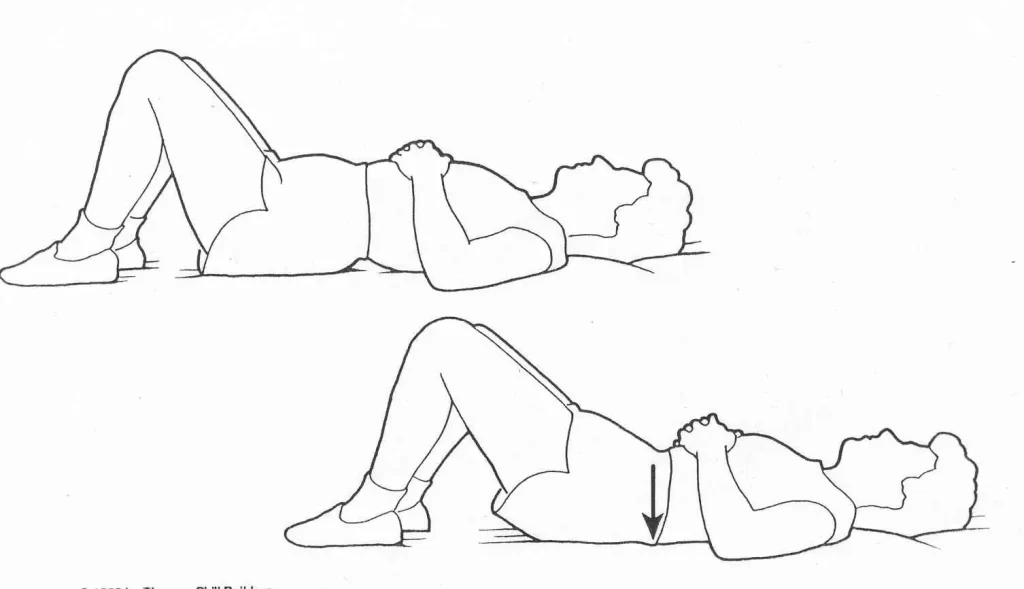
Knee-to-Chest Stretch: While in a supine position, raise one knee towards your chest at a time. This exercise helps release tension from low back trigger points and stretches the gluteus medius muscle.
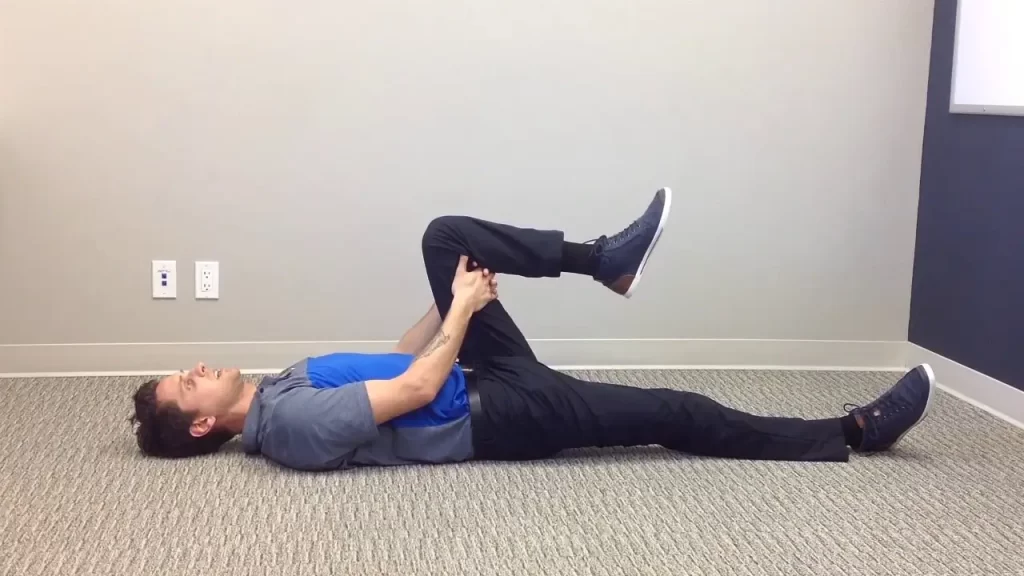
Hamstring Stretch: Sit or stand and extend forward towards your toes to lengthen your hamstring muscles. Lower back tension is lessened by maintaining the flexibility of these big leg muscles.
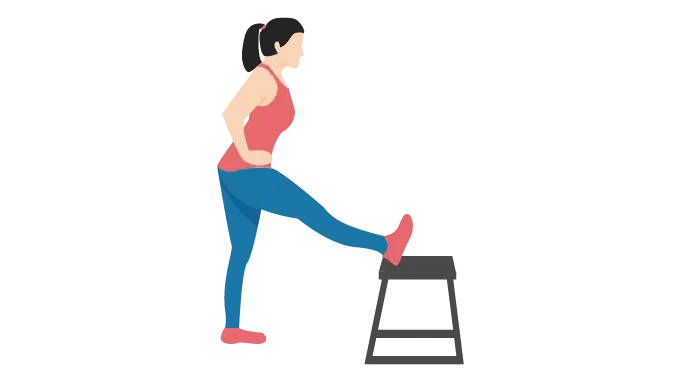
Piriformis Muscle Stretch: While sitting and bending forward, cross one ankle over the opposing knee to target the piriformis, a little muscle that can cause sciatic discomfort when it is tense.
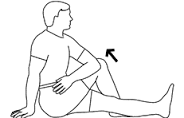
Hip Flexor Stretch: Prevent low back discomfort by stretching your hip flexors, which can be shortened by prolonged sitting. Leap forward while holding the opposite leg as the other is extended behind you.
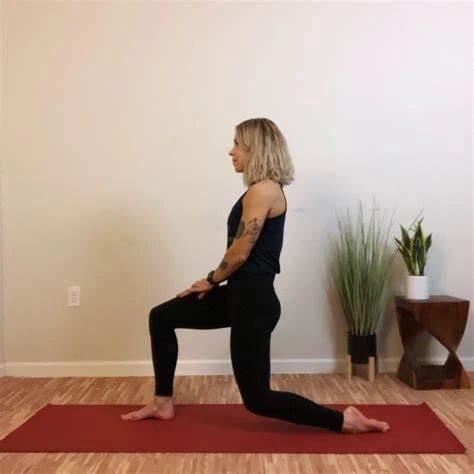
Spinal Twist: To provide your spine rotational mobility, gently twist your torso when sitting or lying down. Spinal extensor trigger point pain can be reduced with this kind of stretching.
Specific Exercises
Targeted exercises are essential for reducing trigger point-related low back discomfort. By using the affected muscles, certain exercises might help reduce discomfort.
To start, warm up your lower back using pelvic tilts. While you sleep on your lower back with your legs bent, gently flatten the spinal column on the floor and engage your abdominal muscles. After five seconds of holding the posture, let go.
Advance to knee-to-chest stretches that release tension on sciatica-related trigger points and target the gluteus maximus muscle. For 15 to 30 seconds, keep your knees parallel to your chest while keeping the other foot flat on the ground.
To generate a mild stretch down the side of your torso, perform the quadratus lumborum stretch by lying on your side, drawing your top knee towards your chest, and reaching upwards with your top arm.
bird-dog. While maintaining a neutral spine, stabilize yourself on all fours and extend one arm forward while extending the opposing leg back.
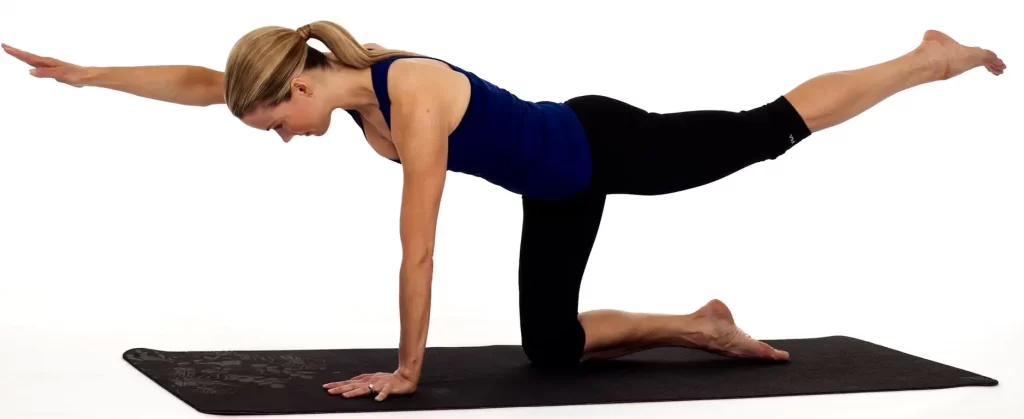
To strengthen your spinal extensors, try doing bridges. To perform this, some of you could fold your knees and lie flat on your back. Then raise your hips until your shoulders and knees are perpendicular together.
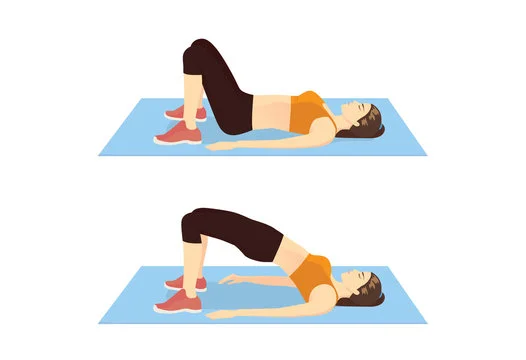
Lengthen your iliopsoas muscles by stepping forward with one leg and lowering your hips until both knees are at a 90-degree angle while maintaining a straight upper body.
After working out, employ self-massage techniques to relieve trigger points that result in referred pain. For around 30 seconds, apply steady pressure to sensitive areas of the lower back muscles using your hands or a massage tool.
Since tight hamstrings frequently cause lower back problems, include hamstring stretches. Bend forward from the hips while maintaining a straight back, placing one foot in front of you.
Dry needling
This includes the use of tiny needles. They alleviate tension in the spot by penetrating the skin. This method can lessen inflammation and pains while also increasing blood flow.
Ultrasound treatment
It includes the use of high-frequency sound waves to ease pain and activate the muscles. Using an ultrasonic transducer on the affected back trigger points is what it entails.
High-frequency sound waves emitted by this apparatus pierce deeply into the muscles. They vibrate and generate heat as a result. It doesn’t need any downtime and is usually painless.
Electrical stimulation
It stimulates the muscles and lessens pain by applying tiny electrical currents. Chronic pain sufferers may benefit from this method.
Heat treatment
It includes heating the affected region. It eases the trigger points in the back muscles and improves blood flow. It can work especially well in conjunction with other therapies. They are massaging and stretching.
Trigger Point Therapy Contraindications for Lower Back Pain
Although it is not suitable for everyone, lower back trigger point therapy can be a useful treatment for muscular soreness. You might not be able to get this kind of therapy safely if you have certain illnesses.
Pressure used during treatment may result in bruising or more severe problems if you have a bleeding issue or are on blood thinners.
The additional pressure and manipulation included in trigger point release procedures may exacerbate a recent fracture in your lower back.
When receiving manual therapy, there is a chance that open wounds or skin infections close to the treatment region might transmit the infection.
Severe osteoporosis increases the risk of fractures; severe therapies such as trigger point stimulation may cause damage to the bone.
Advanced diabetic patients may have diminished sensibility, which increases their risk of harm from deep tissue work treatments.
Before undergoing any kind of physical manipulation, including trigger point treatment, those who have just undergone lower back surgery should give themselves time to recover.
This therapy should not be used by those who are having severe flare-ups of low back disorders since it may make the pain and inflammation in the affected regions worse.
People who have been diagnosed with malignant tumors in their musculoskeletal system are not allowed to have massages applied to the regions around the tumors.
Conclusion
You can better control your lower back discomfort by being aware of its trigger points. For many people experiencing this frequent ache, methods such as neuromuscular massage treatment, stretching, and focused exercises provide alleviation.
Finding and fixing these troublesome areas in the muscle can significantly enhance your day-to-day activities if you use the proper technique. Keep in mind that chronic pain should not be disregarded; seeking expert advice guarantees that low back problems are treated safely and appropriately.
Accept these techniques as instruments for a more comfortable and powerful back.
FAQs
What Leads to Lower Back Trigger Points?
Usually, stressing a muscle results in trigger points. This can occur while performing a strenuous exercise without warming up (lifting a sofa, for example) or when a muscle is progressively strained (slumped posture over ten years, for example). Extreme discomfort can result from lower back muscles pulling on joints, impinging on nerves, and having trigger points, knots, and ongoing tension.
How to Treat Lower Back Trigger Points?
The most effective method for releasing lower back trigger points is deep tissue massage. A professional physical therapist, massage therapist, or chiropractor’s hands can be used for this, or you can use a specially designed gadget like QL Claw at home.
Lower Back vs. Upper Back Trigger Points?
Trigger points can form in any muscle. While lower back trigger points are typically more complicated, upper back trigger points are typically easier to work out with a foam roller or at-home massage.
Why do muscles in the lower back get so tight?
There are several potential reasons for lower back stiffness, such as ankylosing spondylitis, arthritis, nerve injury, and sprains or strains.
References
- Debutify. (2022, January 22). Lower Back Trigger Points – A Key To Lower Back Pain Relief. Back Muscle Solutions. https://backmusclesolutions.com/blogs/the-ql-blawg/lower-back-trigger-points?srsltid=AfmBOopuE2kSo1Dr-d0HcvZU_gC8DvhFcS1TKUK8wcf5pAldlTK_vurc
- Brandon, & Brandon. (2023, April 14). How to Release Trigger Points for Lower Back Pain – Brandon Cope. Brandon Cope – Medical Massage. https://brandoncope.com/trigger-points-for-lower-back-pain/
- Bean, S. (2023, October 10). Lower Back Trigger Points – Therapy and Pain Relief. All Injury Rehab Chiropractic. https://allinjuryrehab.com/lower-back-trigger-points/
- Lower Back Trigger Points | Smith Chiropractic & Wellness Center. (2020, March 23). Smith Chiropractic & Wellness Center. https://smithcw.com/lower-back-trigger-points/
- Visnic, S. (2023, December 22). Low Back Trigger Points – Pain Relief Techniques. Release Muscle Therapy. https://releasemuscletherapy.com/low-back-trigger-points/

